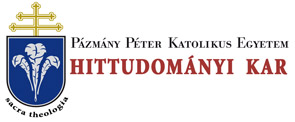Folia Theologica 4. (1993)
Tibor Somlyói Tóth: The forms of religious mentality in the Anjou age
THE FORMS OF RELIGIOUS MENTALITY 139 Domina a Pannonia” of Hungary.24 Louis the I, too, uses the same gentle adjective to describe the Blessed Virgin in the deed of Szepes (1347), in the deed of foundation of the Clarissa nuns of Óbuda (1368), and in the diploma confirming the rights of the nuns of Veszprém völgy (1373). Before Prince Stephen the sons of Paris, Philip an John court pages donate a part of their estates to the Augustine hermits, for their salvation and „ob reverendam ... virginis gloriose in qua totam fiduciam et spem gererent singularem, confidentes insuper oracionibus, vigiliis et ieiuniis ac aliis operibus divinis virorum religiosorum fratrum Heremitarum.”25 The endowment, serving equally the expression of loyalty towards the king and a moderate possession of worldly goods, had been widespread, as a sort of asceticism, especially from the mid-fourteenth century on. Of the numerous people donating two categories can be distinguished: knightly dignitaries around the royal court as well as those of the landed nobility unconditionally serving the Anjous. The strict-minded order, very much favoured, especially from Louis the I on, the Paulites enjoyed their first Golden Age from the XIVth century. In the hermit communities, expanding the regula of St Augustine, especially pronounced is the cult of the Blessed Virgin. The link of Donch and Lackfi, as well as the Lackfis with the Franciscans was well-know from the beginning of the XIXth century. The Pauline monastery of Csáktornya was also founded by the Lackfi family. Stephen Lackfi, voivode of Transylvania, Royal Chief Master of the Horse, as well as his brother Demeter in 1376 gave their Várhely estate to the hermits so that they build there a monastery in honour of the Blessed Virgin and All Saints day26, Palatine Nicholas Kont in 1361 in the diocese of Veszprém, in Csatka (at present the county of Komárom) established a monastery for the hermits of St Paul. The palatine gave over to them his estates the name of Csatka, Répce and Báránd, received not long ago from King Louis the I. In 1371 his widow added to the donation of her husband a mill-site in her village called Tűnő, on the river Innancza. In 1394 the longlived widow wishes to secure the peace of her soul by the donation of a further 24 G. FEJÉR, Codex Diplomaticus, VIII., c.V., 2. 25 1354; T. SMICIKLAS, Codex diplomatics regni Croatiac, Dalmatiae et Slavoniae II-IV. Zagrabiae, 1904-1934, II., 236-237. 26 Vitae fratrum XXXIII.c.; Manuscriptum in: Bibliotheca Univ. Budapestiensis, Ab 151.; F. L. HERVAY, Gregorius Gyöngyösi Vitae Fratrum, Budapest. 1988, 75.
